
Cave Creek Ranch
Portal, Arizona
4/29/2018 - 5/3-2018
Nearly half the bird species that have been seen in North America can be seen at or near Cave Creek Ranch!

 |
| female Black-chinned Hummingbird |
 |
Lodging is simple, clean and comfortable - but who spends time indoors???? This area is all about the birds. People come from all over the world to tiny Portal, Arizona, staying at Cave Creek Ranch or any one of several other nearby places in the Chiricahua Mountains.













The scenery is spectacular, with towering cliffs of pinkish rhyolite (a volcanic rock).





They have BIG hummingbirds in this part of Arizona, including the Blue-throated Hummingbird that's as long as many warblers and some sparrows. They announce their approach with a sharp loud tick sound.



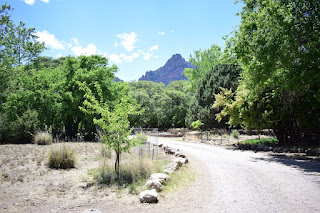




From the porch at Cave Creek Ranch, visitors can watch birds, rabbits, javelinas, small local deer called Coue's Deer, and coatis (also known as coatimundis).
 |
| Coati heading for the peanut butter |




This was Bernie's first trip to Arizona, and he was constantly amazed at the sheer quantity of birds (the number of different species and the number of each kind of bird!) and the refreshing quiet. The birds nearly outnumber the rocks!





 |
| Pomegranate in flower |


Hummingbirds of several species buzzed, chirped and hummed right by our heads.
 |
| female Calliope Hummingbird |
 |
| Broad-billed Hummingbird |


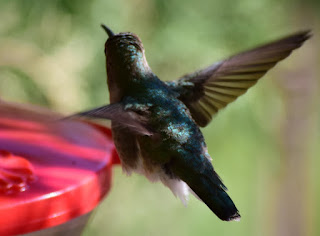
We were puzzled by the juvenile or maybe adult female hummingbird in the following pictures. The reddish undertail coverts and the bit of orange on the inner wing first suggested either Rufous or Allen's. But we finally decided it's a female Broad-tailed Hummingbird in bright sun. They make a very loud wing buzz.











We forgot to ask the ranch's owner, Reed Peters, how much hummingbird nectar he and his staff put out daily during spring and summer, but we did learn that he goes through 400-500 pounds of birdseed every week during peak season, and 100-250 pounds a week the rest of the year!
 |
| Curve-billed Thrasher |

Above is one of the Acorn Woodpecker "granary trees", every hole dug to hold an acorn for the flock to eat in the harsh days of winter. (Even in Arizona, winters can get rough! Temperatures often drop below freezing for many days in a row.)

Seed on the ground attracts Green-tailed Towhees, Lazuli Buntings, thrashers, wrens, siskins, sparrows, and Lesser Goldfinches.
 |
| Green-tailed Towhee |
 |
| Chipping Sparrow |


 |
| Pine Siskin |

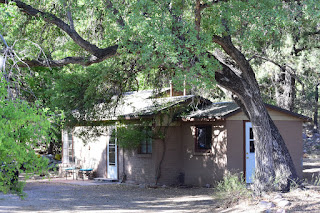


 |
| Summer Tanager |
 |
| Ash-throated Flycatcher |

This suspension bridge over Cave Creek was washed out in the "500 year flood" that took place in 2014.



In addition to nectar and bird seed, the staff at Cave Creek Ranch provides jelly for orioles and Black-headed Grosbeaks and meal worms for Bridled Titmice, as well as suet and peanut butter.
Birds aren't the only critters to enjoy jelly.
 |
| Cliff Chipmunk |
Below: Scott's Orioles followed by Hooded Orioles. (Very confusing! Hooded Orioles don't have hoods, Scotts do!)

 |
| Scott's Oriole |
 |
| male Hooded Oriole |
 |
| female Hooded Oriole |


Several years ago, Maeve went on a birding trip with a Nature Conservancy guide who always referred to the brilliantly-colored Western Tanagers as "wasted teenagers". Silly nickname for a glorious bird!





Bullock's Oriole

 |
| White winged Dove |
 |
| Mexican Jay |
Bad hair day alert! This little Bridled Titmouse and the cardinal with the mohawk looked ready to take on any comers! (The western subspecies of Northern Cardinals have larger crests that our Vermont birds. Ornithologists are now considering whether the two types are actually different species.)



Above is another mystery bird. The bill looks like it's a grosbeak, perhaps a female or immature Black-headed Grosbeak (related to the male below), but females and immatures should all have eye stripes and generally "fancier" heads. We saw male Red Crossbills this same day, and their females are yellow - but there doesn't seem to be any "cross" in that bill!
Added after: Several birders have identified the mystery bird above as a female Hepatic Tanager, a species that has unusually hefty bills compared with most other tanagers!
 |
| Black-headed Grosbeak |
 |
| Cactus Wren |

 |
| probably a Bewick's Wren, one of the overall grayish southwestern variety |
 |
| Black-headed Grosbeak |
 |
| Cactus Wren |

A few homeowners in Portal open their yards to birders and even provide places to sit and shelter from the sun! Some of our photos are from two of those backyards.










 |
| Coue's Deer |
 |
| Hummer with an itch |
There was great excitement among birders and wildlife photographers after this Lewis' Woodpecker was spotted. These unusually-colored woodpeckers (pink and green!) are usually farther north during the breeding season.



Cave Creek Ranch offers guided birding walks twice a week. Elaine, the guide, lives in the area and is knowledgeable about birds, mammals, flora, and history. We learned an amazing amount of information on the two walks we took with Elaine!



 |
| female Red Crossbill |
 |
| male Red Crossbill |





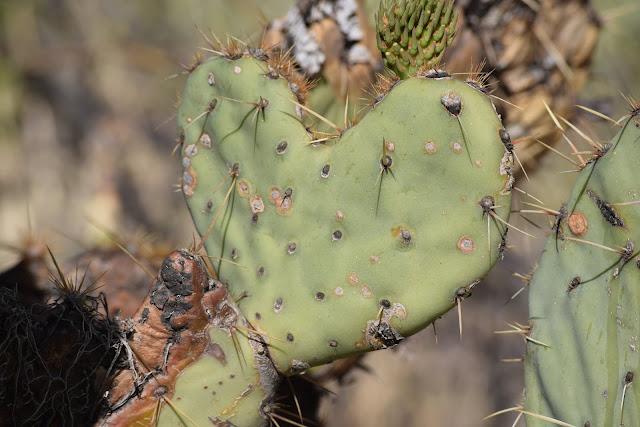
We love cactus!



Black-throated Sparrows had been a "nemesis bird" for Maeve on five previous visits to southeastern Arizona. This time we got good looks!



 |
| Bridled Titmouse |
 |
| either House Finch or Cassin's Finch |



 |
| Ladder-backed Woodpecker |
 |
| White-crowned Sparrow |
 |
| High wire act |

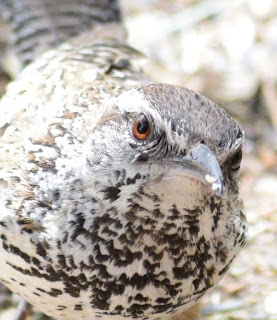




 |
| Lark Sparrow |

 |
| Pine Siskin |
The Southwestern Research Station is part of the American Museum of Natural History. Scientists come from around the country and around the world to stay there and take part in research, workshops and classes. We walked around the grounds and had an excellent supper there. (On our next visit, we're planning to stay in one of the little cottages on the premises.)

 |
| Lazuli Bunting |

Below: Lazuli Buntings, Lesser Goldfinch, Pyrrhuloxias, and Canyon Towhee





 |
| Pyrrhuloxia |
Bronzed Cowbirds (Male on left)
 |
| Green-tailed Towhee |



 |
| Gambel's Quail |


 |
| Lesser Goldfinches and Pine Siskins |
 |
| Lesser Goldfinch |
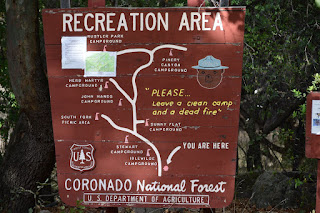

 |
| Painted Redstart |


South Fork Canyon was badly damaged in the 2014 flood, with a big section of the road washed out. We were delighted to find that the lovely forested trail still exists; you just have to walk about 15 minutes on the washed-out area to get to it.




Dusky Flycatcher



Our day-long hike along the South Fork Canyon trail was one of the highlights of our Arizona stay. It's a gorgeous trail through forest, through stream crossings, between cliffs so close we could almost reach out and touch them on both sides.



Probably the most sought-after bird in South Fork is the Elegant Trogon - and we saw at least two males, many times!!
 |
| Elegant Trogon |





We saw the male trogons flying side by side and perching side by side. Back at the ranch, Reed told us that trogons settle boundary disputes this way. They fly along a line and agree that what's to the left is mine, what's to the right is yours.
Below, the cliffs around Portal are riddled with caves, some of which have ancient petroglyphs inside.













Thank You Reed and co-workers for maintaining such quiet, bird friendly, hospitable accommodations amongst the breathtaking rock formations, woodlands, wildlife and abundant birds of the Chiricahuas.
Thank You Elaine
 for sharing your knowledge and expertise on "slow birding" walks.
for sharing your knowledge and expertise on "slow birding" walks. Click here for Cave Creek Lodging website.
Bernie & Maeve
PS anyone in Portal looking for a house sitter - please send us an email. Bernie.paquette(at)yahoo.com

To get the most out of nature, stop, look, and listen. Nature will astound you. ~Bernie
Photos taken with Cannon SX-50 point and shoot, and Nikon D3300 with 55-200 zoom lens.
In order to see birds
it is necessary to become part of the silence. ~Robert Lynd
Find more information about Cave Creek Ranch @ https://www.cavecreekranch.com/
Comments about this posting received via email
Maeve,
That
was the most wonderful blog, post, pictures, witty, cute, amazing thing I have
ever clicked on! It’s so awesome! You’re so talented! (I love
the bad hair day alert!)
I
try to explain to friends and family that have not visited me here what it’s
like. This would be perfect to send them.
WOW!
Thanks, Gracious, Merci, Grazie, Arigato, Danka
Thank
you so very much,
Laura
Zeuner
Cave Creek Ranch
-----------------------------------------------------------------------------------
-----------------------------------------------------------------------------------------------------
-----------------------------------------------------------------------------------
Great pics! Beautiful spot. Thanks for sharing
Amy O
-------------------------------------------------------------------------------------------------
Thank you most powerfully, Bernie!! My son is an ornithologist. May I share your link with him?
Warmly, June (who formerly worked at DRML)
Warmly, June (who formerly worked at DRML)
-----------------------------------------------------------------------------------------------------------
Terrific photos! Who needs a Sibley book when they have your post! I hope I get there some day. - Peter
-----------------------------------------------------------------------------------------------------
Marvelous post. I so want to go there! - Liz-----------------------------------------------------------------------------------------------------




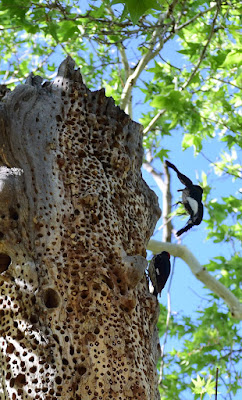

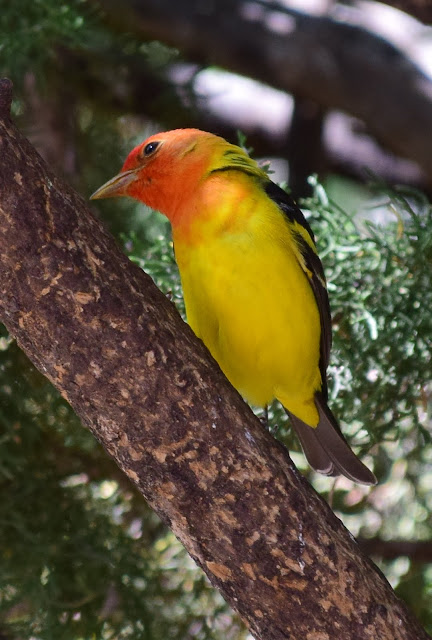
































Great pic's! Thanks for sharing your adventure in Paradise!
ReplyDeletethanks for the wonderful photos. brings back wonderful memories of many trips to s.e. arizona.
ReplyDeletep.s. a carolina wren this a.m. at feeder. jericho. bob weber
Thank you for this wonderful post full of gorgeous pictures and lovely little nuggets of information.
ReplyDelete